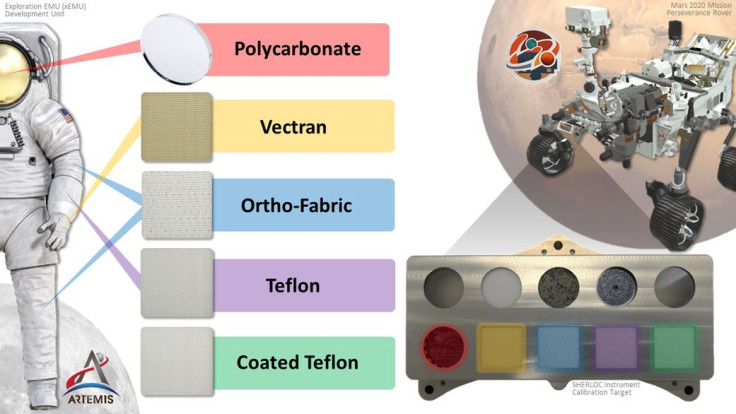NASA’s Perseverance To Carry New Spacesuit Materials For Mars 2020 Mission
KEY POINTS
- The Mars 2020 mission is scheduled to launch on July 30, 2020
- Perseverance rover will test how the spacesuit materials will perform in Mars
- Results of the tests will help NASA's future human mission to the Red Planet
NASA will use the upcoming Mars 2020 mission to plan its first human expedition to the Red Planet. As part of the mission, the Perseverance rover will carry materials used in NASA’s new spacesuits to test how they will perform in Martian conditions.
NASA’s latest mission, known as Mars 2020, is scheduled to launch on Thursday from the Cape Canaveral Air Force Station in Florida. If everything goes well for NASA, the mission will reach Mars on Feb. 18, 2021.
For the mission, NASA plans to explore the Red Planet using its new Perseverance rover. Aside from studying the Martian surface, the rover will also help the agency test its new spacesuits on Mars.
Perseverance will bring five pieces of spacesuit materials to the Red Planet. Using its Scanning Habitable Environments with Raman & Luminescence for Organics & Chemicals (SHERLOC) experiment, Perseverance will test how the spacesuit materials will be affected by the radiation and other environmental elements on Mars.
“On Mars, radiation will break down the chemical composition of the materials, weakening their tensile strength,” Amy Ross, the designer of NASA’s new spacesuits, said in a statement. “We want to figure out how long these materials will last. Do we need to develop new materials, or will these hang in there?”
According to Ross, the Mars spacesuits were specifically designed to adapt to the harsh conditions of the Red Planet. They were made to withstand the planet’s dusty surroundings and to protect astronauts from radiation exposure.
“On Mars, you're farther from the Sun, and you have at least a little atmosphere to scatter the UV,” Ross explained. “But that's when the duration of exposure starts to get you. You have to plan on being exposed to the surface most of the time. Mars spacesuits will be more like ones we use for the Moon and less like those for the ISS. I'm trying to make the Moon suit as much like the Mars suit as possible.”
The data that will be collected by Perseverance’s SHERLOC instrument will be used by NASA to make adjustments to the design of its new spacesuits if needed. This task will serve as a major step in NASA’s preparations for sending humans to Mars.

© Copyright IBTimes 2024. All rights reserved.





















